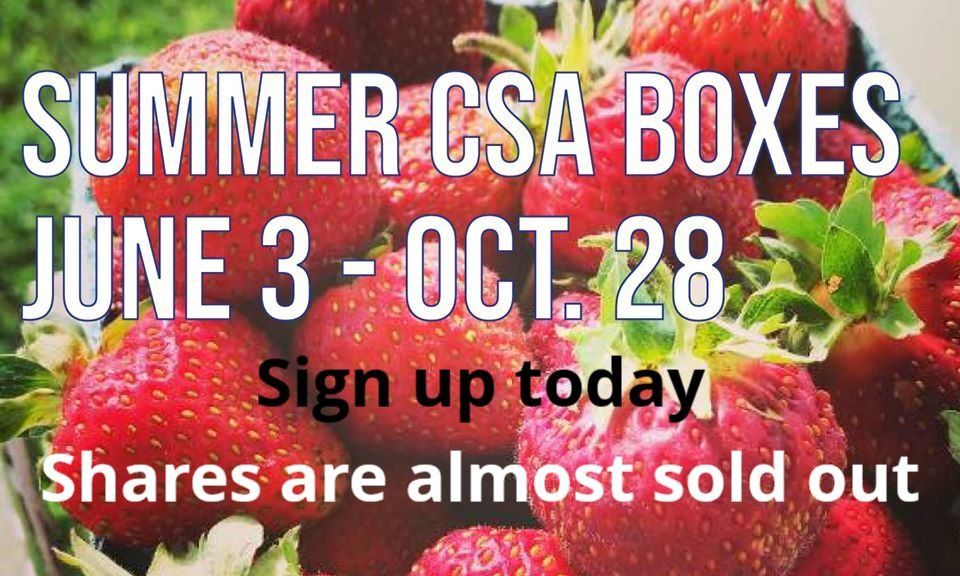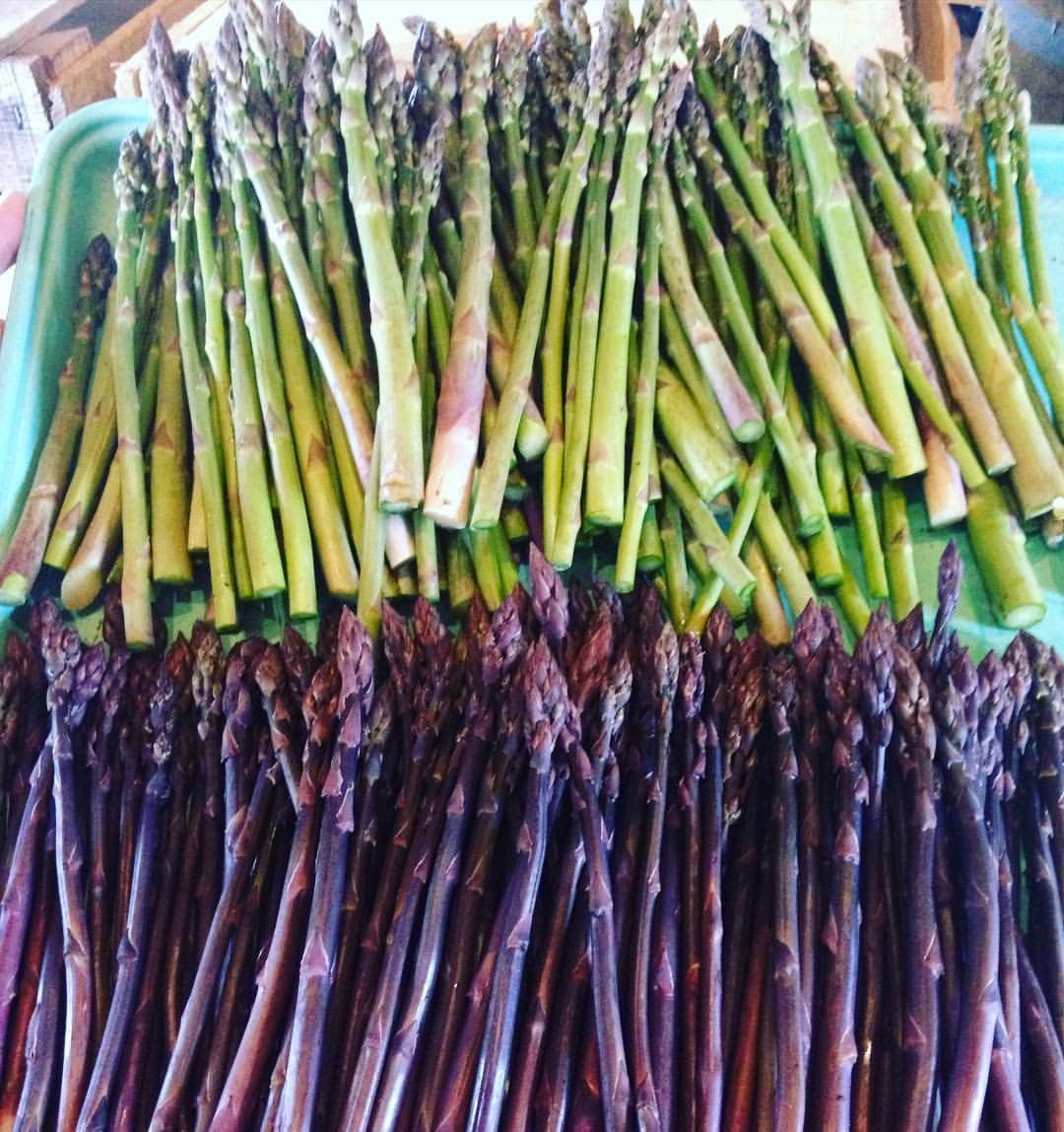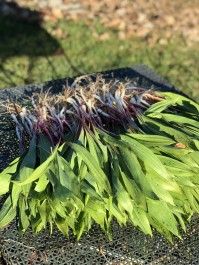It's hard to believe Friday is here again already. Time seems to fly by us as we get into the busy spring season, so much planting and seeding to do, preparing fields, there is not much time for thinking. Time needs to be reserved for doing. To help us keep up with the pace of spring in an orderly fashion, each winter I sit down and make a farm plan, a rough draft detailing crop rotations, what should be planted where, when, and how much. Plenty can change - farming is a dynamic endeavor, and the plan can be adjusted based on a host of factors. Fields too wet to plant, unexpected weed pressure, seed shortages, etc all can impact the plan, but each spring when the busy season begins it is so helpful to have a general framework to manage within. Plan the farm, and farm the plan. That is my mantra when things get busy. I trust the plan, and put my head down and work.
We've been busy not only planting lately, but also irrigating our crops. This dry spring has been so very different than the last 3 years - normally we're fighting to get in to fields that are just dry enough to work up. This year, we've had no trouble prepping fields, digging down spring weeds, and honestly our fields never looked better. But the dry soil - while easy to work up - won't help germinate spring seeded crops very well, so we've been irrigating 10 hours a day nearly every day this week to help those seeds pop up, and transplants like these 40,000+ onions need a good drink of water for their shallow roots to get established. The gentle evening rain a few nights ago helped as well, and yesterday I saw our field peas, carrots, and spinach all beginning to emerge from the soil. Flags of green in a sea of brown, a sign of hope and life and growth, and I couldn't help but smile. Every year, the magic of seed germination makes me feel like a kid again.
Now that the nighttime lows have stabilized above the low 20's, fellow Great Oak farmers Eric (left), Ryan (right), and I - along with our faithful border collie Buster - got these hoophouse peppers transplanted, and have begun trellising up the tomatoes as well. Earlier this season, while the nights were still cold, we covered up the tomatoes with heavy white row cover to keep them warm like a blanket. Now that the coldest nights are past us and we won't need to cover them up again (a small portable heater will keep them safe if the temps get into the high 20's again at night), we can safely begin to string them up to manage their production for more and better fruits and to help increase airflow to minimize disease pressure, an important aspect of management for organic production.
The peppers - since they are not trellised up and no strings will interfere with applying row cover over the top of them - will continue to be covered up at night inside their hoophouse for several more weeks to help keep them happy. By the end of today, our cucumbers will also be transplanted out into another hoophouse. They too will be covered up at night with heavy row cover to keep them from getting damaged by cold nights. With our short growing season up here in the Northwoods, we need to be creative in order to get good, early harvests of those heat loving veggies like peppers, tomatoes, and cucumbers. But the extra effort is worth it - I can hardly wait to sink my teeth into the first crisp cucumber of the season in late June/early July!
This week we also started another 2,000 broccoli (and PURPLE cauliflower this week too!) in the greenhouse to be transplanted out in 4 weeks, for harvest about 60 days after transplanting (mid-late August). This is the 4th planting of broccoli, and we have 3 more plantings this size still to start in the coming weeks. We use the vacuum seeder shown above to seed a variety of different crops quickly and efficiently. It helps to keep my farmer fingers from seizing up trying to manually put one of those tiny round seeds in each cell of a tray full of soil. The aluminum plate you see here is mounted on a simple box and hooked up to a small shop vac. Each divot in the plate has a small hole in the bottom. When turned on, the vacuum sucks one seed into each divot of the seeder plate. After rolling the seeds around on the plate to cover each divot, the plate is aligned over top of the flat you want to plant into, and when turned off, the vacuum pressure stops and a single seed is dropped into each cell of the flat below. A red lip at the bottom of the plate holds any extra seed (it rolls down into the lip once all the divots have a seed in them). Such a simple tool, but an incredibly handy part of our farm system here at Great Oak Farm.
One more crop we started in the greenhouse and are getting ready to transplant are these green beans. Transplanting GREEN BEANS? Yeah, I know. It isn't the first time I have wondered what have I gotten myself into - but starting them in the greenhouse last week means they will be ready to harvest several weeks earlier than direct seeded green beans. These little beauties will be destined for some trial rows in our hoophouses, 300' row feet of green beans in total. Outside, it will be another week or 10 days before the soil is warm enough to germinate beans, and even if they germinate beans are very cold sensitive and will die if hit by a frost. Inside the protected environs of our hoophouses, we'll be able to keep them warm and hopefully begin picking beans in mid-late June. This is the first year I have tried transplanting them, and you will be able to taste the results of this trial later this summer.
Well, that's it from me this week - back to work! Thanks as always for your thoughtful support of small local farms and food producers. It truly makes a big difference in our small community!
Yours in community,
Chris Duke
Farmer, Great Oak Farm
CSA Manager, Bayfield Foods









